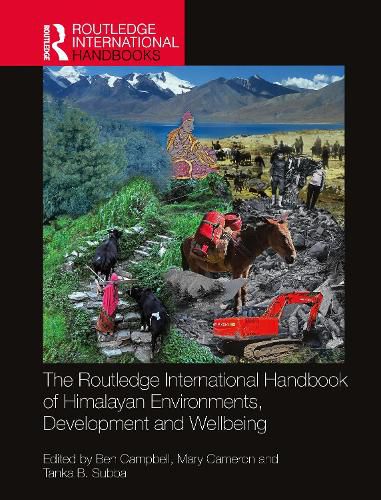Readings Newsletter
Become a Readings Member to make your shopping experience even easier.
Sign in or sign up for free!
You’re not far away from qualifying for FREE standard shipping within Australia
You’ve qualified for FREE standard shipping within Australia
The cart is loading…






Shifting dynamics of peoples, livelihoods, and territories, influenced by global warming, require new ways of thinking and new kinds of politics beyond the sovereignties of idealized traditional European nation-states. The Routledge International Handbook of Himalayan Environments, Development and Wellbeing features over 70 scholars from the social sciences, humanities, and natural sciences who explore the interrelationships between environmental change, development, and wellbeing across the entire Himalayan region-from the Indian Himalayas in the east to Bhutan, Nepal, Tibet (TAR), India, and Gilgit-Baltistan in the west.
Within over 50 chapters, the handbook presents engaging field-based research on the region's socio-cultural diversity, climate adaptation, and socio-economic transformation. It examines creative ways Himalayan communities adapt, seek wellbeing, and respond to environmental and development challenges. Lessons about learning from Indigenous and local peoples, about governance of forests and water, and grassroots conservation practices from the Himalayan region can help inform global networks of researchers and practitioners.
The handbook will interest scholars, students, stakeholders, and the public about the evolving relationships between Himalayan peoples, territories, and global warming, offering insights into people's creative ways for understanding, adapting, and seeking wellbeing in environmental relations and development possibilities.
$9.00 standard shipping within Australia
FREE standard shipping within Australia for orders over $100.00
Express & International shipping calculated at checkout
Shifting dynamics of peoples, livelihoods, and territories, influenced by global warming, require new ways of thinking and new kinds of politics beyond the sovereignties of idealized traditional European nation-states. The Routledge International Handbook of Himalayan Environments, Development and Wellbeing features over 70 scholars from the social sciences, humanities, and natural sciences who explore the interrelationships between environmental change, development, and wellbeing across the entire Himalayan region-from the Indian Himalayas in the east to Bhutan, Nepal, Tibet (TAR), India, and Gilgit-Baltistan in the west.
Within over 50 chapters, the handbook presents engaging field-based research on the region's socio-cultural diversity, climate adaptation, and socio-economic transformation. It examines creative ways Himalayan communities adapt, seek wellbeing, and respond to environmental and development challenges. Lessons about learning from Indigenous and local peoples, about governance of forests and water, and grassroots conservation practices from the Himalayan region can help inform global networks of researchers and practitioners.
The handbook will interest scholars, students, stakeholders, and the public about the evolving relationships between Himalayan peoples, territories, and global warming, offering insights into people's creative ways for understanding, adapting, and seeking wellbeing in environmental relations and development possibilities.